#Neutrones
Text

¡Por primera vez en la historia! El Telescopio Espacial Webb captó la creación de una Estrella de Neutrones 😯
Checa como se forman
6 notes
·
View notes
Text

I never uploaded my updated Jimmy Neutron designs! I think it’d be funny if a modern JN reboot had at 2000s aesthetic both animation-wise and also for the look of Retroville and its citizens fashion
My friend Eric did an animation using these designs! It came out SO GOOD
youtube
16K notes
·
View notes
Text





shrugs
#nicktoons unite#danny phantom#jimmy neutron#the fairly oddparents#spongebob squarepants#my life as a teenage robot#el tigre#dewdles#comic#oh yeah hey guys im finally getting into mlaatr and el tigre now so theyre kinda just around
25K notes
·
View notes
Text


The 2am snack rush
3K notes
·
View notes
Text

Peak character design
#yes I included my own oc#I am a menace#Undertale#Mettaton#Mettaton EX#rhyme and reason#rar#mac rar#rar mac#jimmy neutron#goddard jimmy neutron#chip#rocket chip#plainview#chesster#chesster plainview#chesster tulse#pokemon#registeel#pkmn#bender#futurama#bender futurama#bender bending rodriguez#bigweld#bigweld robots#robby the robot#is that everybody#robot ocs#gizmo
42K notes
·
View notes
Text
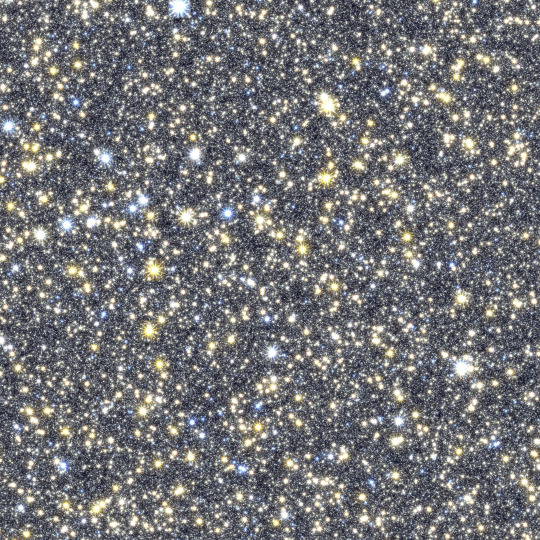
A simulated image of NASA’s Nancy Grace Roman Space Telescope’s future observations toward the center of our galaxy, spanning less than 1 percent of the total area of Roman’s Galactic Bulge Time-Domain Survey. The simulated stars were drawn from the Besançon Galactic Model.
Exploring the Changing Universe with the Roman Space Telescope
The view from your backyard might paint the universe as an unchanging realm, where only twinkling stars and nearby objects, like satellites and meteors, stray from the apparent constancy. But stargazing through NASA’s upcoming Nancy Grace Roman Space Telescope will offer a front row seat to a dazzling display of cosmic fireworks sparkling across the sky.
Roman will view extremely faint infrared light, which has longer wavelengths than our eyes can see. Two of the mission’s core observing programs will monitor specific patches of the sky. Stitching the results together like stop-motion animation will create movies that reveal changing objects and fleeting events that would otherwise be hidden from our view.
youtube
Watch this video to learn about time-domain astronomy and how time will be a key element in NASA’s Nancy Grace Roman Space Telescope’s galactic bulge survey. Credit: NASA’s Goddard Space Flight Center
This type of science, called time-domain astronomy, is difficult for telescopes that have smaller views of space. Roman’s large field of view will help us see huge swaths of the universe. Instead of always looking at specific things and events astronomers have already identified, Roman will be able to repeatedly observe large areas of the sky to catch phenomena scientists can't predict. Then astronomers can find things no one knew were there!
One of Roman’s main surveys, the Galactic Bulge Time-Domain Survey, will monitor hundreds of millions of stars toward the center of our Milky Way galaxy. Astronomers will see many of the stars appear to flash or flicker over time.
youtube
This animation illustrates the concept of gravitational microlensing. When one star in the sky appears to pass nearly in front of another, the light rays of the background source star are bent due to the warped space-time around the foreground star. The closer star is then a virtual magnifying glass, amplifying the brightness of the background source star, so we refer to the foreground star as the lens star. If the lens star harbors a planetary system, then those planets can also act as lenses, each one producing a short change in the brightness of the source. Thus, we discover the presence of each exoplanet, and measure its mass and how far it is from its star. Credit: NASA's Goddard Space Flight Center Conceptual Image Lab
That can happen when something like a star or planet moves in front of a background star from our point of view. Because anything with mass warps the fabric of space-time, light from the distant star bends around the nearer object as it passes by. That makes the nearer object act as a natural magnifying glass, creating a temporary spike in the brightness of the background star’s light. That signal lets astronomers know there’s an intervening object, even if they can’t see it directly.
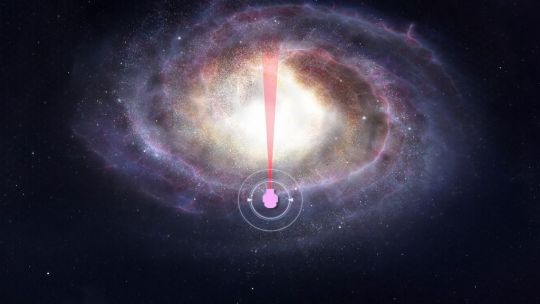
This artist’s concept shows the region of the Milky Way NASA’s Nancy Grace Roman Space Telescope’s Galactic Bulge Time-Domain Survey will cover – relatively uncharted territory when it comes to planet-finding. That’s important because the way planets form and evolve may be different depending on where in the galaxy they’re located. Our solar system is situated near the outskirts of the Milky Way, about halfway out on one of the galaxy’s spiral arms. A recent Kepler Space Telescope study showed that stars on the fringes of the Milky Way possess fewer of the most common planet types that have been detected so far. Roman will search in the opposite direction, toward the center of the galaxy, and could find differences in that galactic neighborhood, too.
Using this method, called microlensing, Roman will likely set a new record for the farthest-known exoplanet. That would offer a glimpse of a different galactic neighborhood that could be home to worlds quite unlike the more than 5,500 that are currently known. Roman’s microlensing observations will also find starless planets, black holes, neutron stars, and more!
youtube
This animation shows a planet crossing in front of, or transiting, its host star and the corresponding light curve astronomers would see. Using this technique, scientists anticipate NASA’s Nancy Grace Roman Space Telescope could find 100,000 new worlds. Credit: NASA’s Goddard Space Flight Center/Chris Smith (USRA/GESTAR)
Stars Roman sees may also appear to flicker when a planet crosses in front of, or transits, its host star as it orbits. Roman could find 100,000 planets this way! Small icy objects that haunt the outskirts of our own solar system, known as Kuiper belt objects, may occasionally pass in front of faraway stars Roman sees, too. Astronomers will be able to see how much water the Kuiper belt objects have because the ice absorbs specific wavelengths of infrared light, providing a “fingerprint” of its presence. This will give us a window into our solar system’s early days.
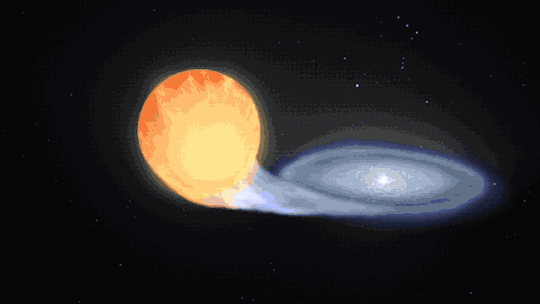
This animation visualizes a type Ia supernova.
Roman’s High Latitude Time-Domain Survey will look beyond our galaxy to hunt for type Ia supernovas. These exploding stars originate from some binary star systems that contain at least one white dwarf – the small, hot core remnant of a Sun-like star. In some cases, the dwarf may siphon material from its companion. This triggers a runaway reaction that ultimately detonates the thief once it reaches a specific point where it has gained so much mass that it becomes unstable.
youtube
NASA’s upcoming Nancy Grace Roman Space Telescope will see thousands of exploding stars called supernovae across vast stretches of time and space. Using these observations, astronomers aim to shine a light on several cosmic mysteries, providing a window onto the universe’s distant past. Credit: NASA’s Goddard Space Flight Center
Since these rare explosions each peak at a similar, known intrinsic brightness, astronomers can use them to determine how far away they are by simply measuring how bright they appear. Astronomers will use Roman to study the light of these supernovas to find out how quickly they appear to be moving away from us.
By comparing how fast they’re receding at different distances, scientists can trace cosmic expansion over time. This will help us understand whether and how dark energy – the unexplained pressure thought to speed up the universe’s expansion – has changed throughout the history of the universe.
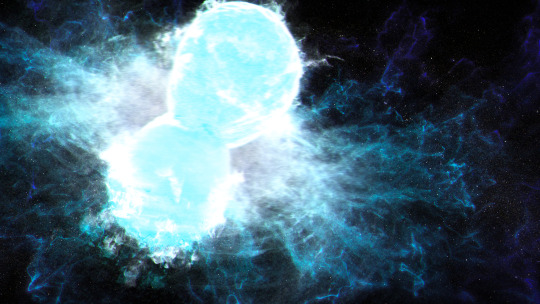
NASA’s Nancy Grace Roman Space Telescope will survey the same areas of the sky every few days. Researchers will mine this data to identify kilonovas – explosions that happen when two neutron stars or a neutron star and a black hole collide and merge. When these collisions happen, a fraction of the resulting debris is ejected as jets, which move near the speed of light. The remaining debris produces hot, glowing, neutron-rich clouds that forge heavy elements, like gold and platinum. Roman’s extensive data will help astronomers better identify how often these events occur, how much energy they give off, and how near or far they are.
And since this survey will repeatedly observe the same large vista of space, scientists will also see sporadic events like neutron stars colliding and stars being swept into black holes. Roman could even find new types of objects and events that astronomers have never seen before!
Learn more about the exciting science Roman will investigate on X and Facebook.
Make sure to follow us on Tumblr for your regular dose of space!
#NASA#astronomy#telescope#Roman Space Telescope#dark energy#galaxies#cosmology#astrophysics#stars#galaxy#space images#time#supernova#Nancy Grace Roman#black holes#neutron stars#kilonova#rogue planets#exoplanets#space#science#tech#technology#Youtube
2K notes
·
View notes
Text
incidentally i would get the alchemists to respect me because I know how to synthesise mauveine. and they would absolutely not care that i am a quadruple scorpio who disrespects the great work and has stolen their secrets because oh three dicked elf jesus we will all be so fucking rich if the local equivalent of the byzantine aristocracy doesn't have us all executed for purple crimes
#[kicking open the door of the alchemy guild] bad news guys the philosopher's stone is named fast neutrons and will kill all of us.#[slams flask on the table] the good news is that i have coal tar.
1K notes
·
View notes
Text

Some downtime
Designs by @nicktoonsunite
#the one time I go searching for 2000s cartoons for my film inspo#and I had to come out of it with a new fixation#ALso designs inspired by izbubbles#their stuff is so#gnaws#nicktoons unite#the fairly oddparents#danny phantom#jimmy neutron#timmy turner#spongebon squarepants#danny fenton#my art
1K notes
·
View notes
Text

danny is tim's friend, bro and wingman (and soon best man) 😏
2K notes
·
View notes
Text
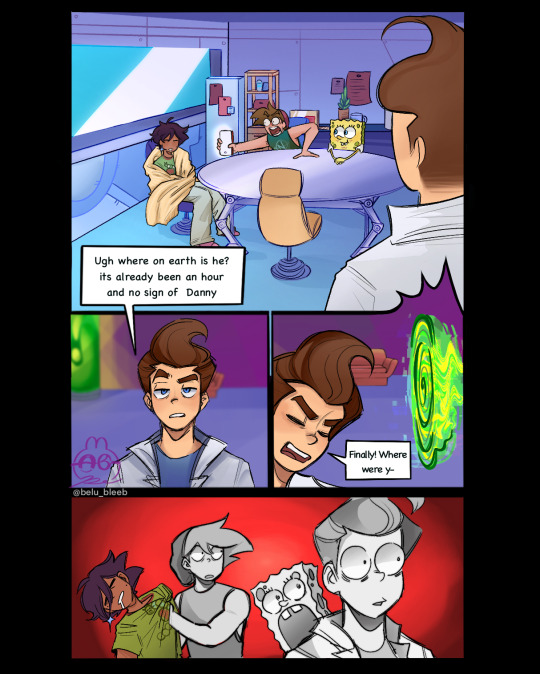
-
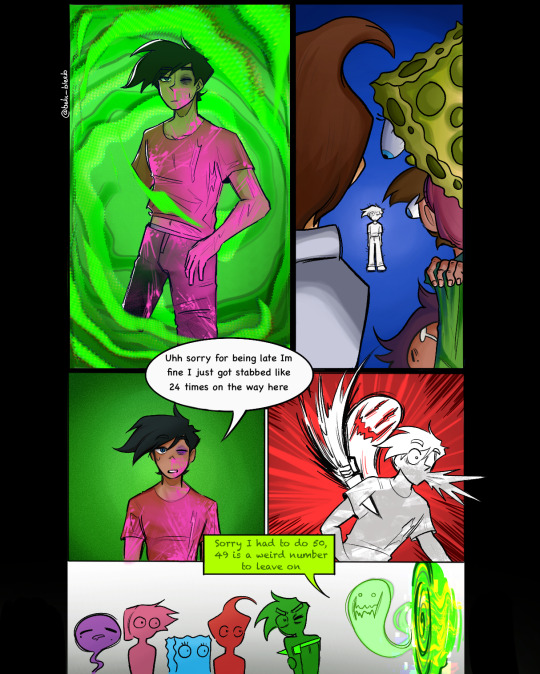
Danny lost count.
belu_bleeb is typing…
I changed up my style formatting, trying to experiment, since this kind of formatting style will be like in the upcoming mini series.
#au#nicktoons unite#timmy turner#jimmy neutron#dawn odesa#anachronousnuau#danny phantom#spongebon squarepants#fic art#comic art#comics#mini comic#comic panels#oc artwork#my art#artwork#digital art#oc art#artists on tumblr#meme art#art#colors#colorful#color palette#funnyshit#funny stuff#funny#funny content#imjustspaming at rhismommentiam ohgod icant stop#story
2K notes
·
View notes
Text
Manny: What's up?
Jimmy: I just- I just watched Turner pour four pounds of sugar into the dryer and tell me he was making cotton candy...
Manny: Did it work?
Jimmy:
Jimmy: NO??
#Jimmy is done#nicktoons unite#nicktoons#nicktoons unite incorrect quotes#jimmy neutron#manny rivera#timmy turner#jimmy neutron boy genius#el tigre#fairly oddparents
618 notes
·
View notes
Text

Can you imagine Jimmy and Dexter knew each other because,,,,,, you know,,,,,, cross dimensional travel
#nicktoons unite#nicktoons#nicktoons unite: 10 years later#jimmy neutron#timmy turner#cartoon network#fusion fall#ben tennyson#ben 10#dexters laboratory
3K notes
·
View notes
Text





ghost vs ghost, who would win?
(it's danny. danny kicked timmy's ass to the ghost zone and back)
just a little smth to celebrate me finishing shadow showdown 100%
#nicktoons unite#danny phantom#danny phantom fanart#nicktoons#danny fenton#dp#timmy turner fanart#timmy turner art#timmy turner#fairly oddparents#fairly oddparents fanart#el tigre fanart#el tigre the adventures of manny rivera#el tigre#my life as a teenage robot#my life as a teenage robot fanart#jenny wakeman#manny rivera#jimmy neutron#jimmy neutron fanart#jimmy neutron boy genius#oc: ambriel rowe#dream zone: ambriel#spongebob squarepants fanart#spongebob squarepants#spongebob fanart#spongebob#you never realise how jam packed this game is until u have to tag all of em#art: mine
486 notes
·
View notes
Text


manny discovers something mildly disappointing about jenny
#nicktoons unite#el tigre#my life as a teenage robot#jenny wakeman#manny rivera#jimmy neutron#but like a tiny cameo#comic#dewdles#sorry again for not opening tumblr for the past 600 years#gonna slowly upload all the shit ive done in the past few months ermm uhh#also forgot to mention but yes thats vega in her wallpaper if you were wondering
6K notes
·
View notes
Text

hey have you guys seen the 7 hour nicktoons unite video
#i am NOT drawing spongebob#i can deal with fairies and aliens and ghosts and high-tech robots but i draw the line at sentient sealife.#not even to mention how the scale is off#spongebob is like. 4 inches tall MAX#anyway :)#my art#digital art#nickelodeon#nicktoons#nicktoons unite#danny phantom#my life as a teenage robot#el tigre#jimmy neutron#fairly oddparents#invader zim
622 notes
·
View notes
Photo
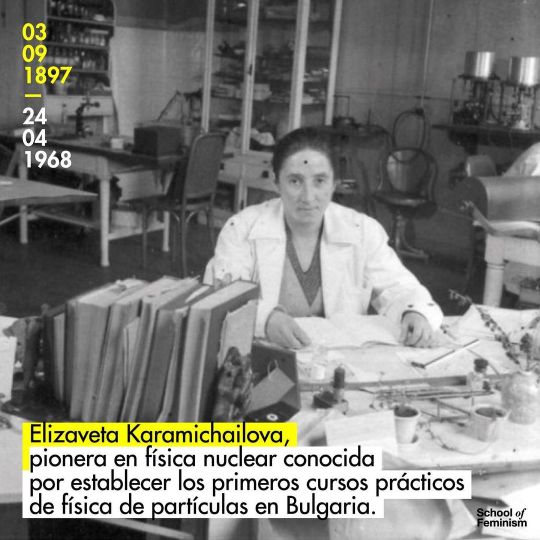
#Herstory #UnDíaComoHoy #ElisabethKaramichailova (Viena, 3/9/1897 - Sofia, Bulgaria, 24/4/1968) #física búlgara y una de las pocas mujeres #pioneras en #físicanuclear a principios del s. XX, estableció los primeros cursos prácticos de física de partículas en Bulgaria y fue la primera mujer en obtener un grado académico en el país. Creció en un ambiente artístico y científico. Se graduó en el Instituto de Mujeres de Sofía en 1917, y continuó sus estudios en la Universidad de Viena. En 1922 se doctoró en Física y Matemáticas con la tesis "Sobre figuras eléctricas en diferentes materiales, especialmente en cristales". Continuó su trabajo en el Instituto para Estudios de Radio, interesándose por la #radioluminiscencia En 1923 regresó a Bulgaria y trabajó como "becaria invitada" en el Instituto de Física de la Universidad de Sofía. Volvió a Viena y comenzó su trabajo sobre la transmutación de elementos ligeros bajo radiación de alfa. En 1931, Karamichailova y #MariettaBlau observaron un tipo específico de radiación previamente desconocida emitida por el polonio, que más tarde sería confirmada por #JamesChadwick como radiación de neutrones, lo que le llevó a descubrir los #neutrones. En 1933, el contrato de "asistente de investigación" que ocupaba en Viena rescindió y tuvo que continuar su investigación sin financiación hasta 1935, cuando obtuvo una beca en Cambridge. Regresó a Bulgaria en 1939, donde fue nombrada docente de Atomística Experimental con Radioactividad en la SU. El estallido de II Guerra Mundial frenó la expansión de las actividades de investigación nuclear. Sus estudios tambiénse relacionaban con la radiación cósmica. Intentó continuar el estudio de la ionización múltiple, pero resultó imposible sin el sofisticado equipo al que tuvo acceso durante su estancia en Inglaterra. Tras el levantamiento de la izquierda en 1944, las nuevas autoridades de extrema izquierda búlgaras calificaron a Karamichailova de "poco fiable" debido a sus puntos de vista anticomunistas y le prohibieron salir del país. Murió de cáncer en 1968, probablemente por la exposición a la radiación a largo plazo. #efemérides #científicas https://www.instagram.com/p/CiDOKDgjoE7/?igshid=NGJjMDIxMWI=
#herstory#undíacomohoy#elisabethkaramichailova#física#pioneras#físicanuclear#radioluminiscencia#mariettablau#jameschadwick#neutrones#efemérides#científicas
0 notes